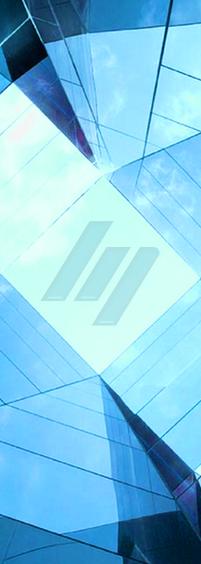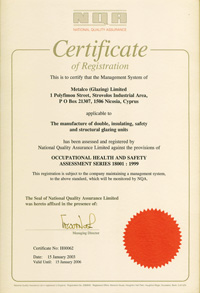

Description
- Thermally toughened HST glass treated using a method of controlled heating and cooling which locks the surface of the glass in a state of compression. Once it has been toughened, the glass is placed in a furnace where it undergoes a specific heating cycle which causes some glasses containing inclusions or impurities to break prematurely. This is known as heat-soak treatment
- Virtually all the glasses can be thermally toughened and heat-soaked: clear or coloured Planibel, Stopsol, Sunergy, Imagin, etc.
- Certain types of magnetron-coated glasses can also be toughened; this requires some adjustment to the toughening procedures
- Thermally toughened heat-soaked tested glasses can be combined with silk-screen printing or enamelling
- Use: in single glazing, insulating glazing, laminated glazing
and so on – primarily for applications where the following are
required:
- Greater resistance to mechanical shocks (glass doors, glass units with punctual settings, etc.)
- Greater resistance to thermal stresses (glasses exposed to solar radiation with possible shadows which cause stresses in the glass, etc.)
- Greater protection against the glass breaking, thereby reducing the risk of injury.
There is still a risk that a thermally toughened glass which has not been heat-soaked may spontaneously break. It is up to the client to assess whether heat-soak treatment is required depending on the type of application in which the glass is to be used
- Glass which has been thermally toughened and heat-soaked is much less likely to break spontaneously
- Once toughened, heat-soaked glasses cannot be sawn, cut, drilled or processed
- Thermally toughened glass complies with EN 14179
Why choose thermally touphened HST glass
The glass may contain nickel sulphide inclusions (NiS) which can vary in size from a few microns to a few millimetres. These inclusions have a special crystalline structure which is different at low (larger volume) and high (smaller volume) temperatures. In the case of a thermally toughened glass, the NiS acquire their stable structure at a high temperature when the glass is heated to approximately 650°C. The rapid cooling involved in the toughening process does not give the NiS time to acquire their stable low-temperature structure before the glass solidifies. The glass is therefore processed at its operating temperature. During this time, the increase in the volume of the NiS inclusions can cause the sheet of glass to break spontaneously once it has been installed.
To limit the risk of breakage, thermally toughened glasses can be heat-soaked. This entails placing the glass in a furnace at a constant temperature for a specific period to process the NiS. Any breakage caused by critical NiS crystals will therefore occur during heat soaking.
Comments
-
Optical performance
The thermal toughening process causes the surface of the glass to distort in two ways:
- Overall bend of 3 mm/m*
- Localised bend of 0.5 mm/300 mm*
* Values for Planibel heat-strengthened glass using the horizontal process
This phenomenon may be more visible in coated glasses.
-
Anisotropy
Anisotropy is caused by compressing the surface of the thermally toughened glass. Under natural lighting conditions, the reflection characteristics vary from one point to another and differently coloured patterns known as "leopard spots" may be seen on the glass.


